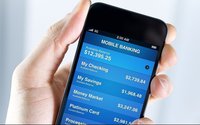Commentary
78% Satisfied With Mobile Banking, While Mobile Wallet Purchases Drop
- by Chuck Martin , Staff Writer, September 8, 2016

Getting consumers to move money through their smartphones has been a tricky proposition at best.
As a pure cash or credit card replacement, mobile payments just aren’t as easy.
Various joint efforts by retailers have not seemed to pan out, and now retailers like Walmart and CVS are more or less going it alone, leveraging their own mobile apps.
Meanwhile, banks seem to be having a bit of success by tapping into mobile as U.S. consumers warm to using their phones for banking, based on a new study.
More than a third (36%) of Americans have not visited a bank branch within the last 30 days and the most popular reason for most (67%) is to make deposits, according to a survey pf 2,400 U.S. U.S. adults conducted by Clarabridge.
For example, here’s the breakdown of how consumers interact with their bank:
- 38% -- Mobile device
- 35% -- Bank Web site via computer or laptop
Nearly two-thirds (63%) of consumers have used their phones to perform a banking task.
One of the reasons for mobile banking success likely involves the services provided, since 78% of consumers who are using mobile banking say they are satisfied.
The good news for banks is that consumers prefer banking apps over third-party services like PayPal and Venmo by 43% to 26%, with 61% of consumers having downloaded their bank’s app. The most popular reason (49%) that people prefer to transfer money via their bank’s app is because it is easier to access account balances.
Millennials seem even more at home with mobile for banking uses, with only a quarter of them not using their phones for any banking tasks.
Many Millennials (42%) say they have never called their bank for help -- 25% lower than the national average.
While banking may be somewhat of a bright spot for mobile commerce, other areas are not feeling as much mobile love.
Mobile wallets, for example, are facing a good news-bad news existence.
Monthly consumer adoption of mobile wallets has nearly doubled from 11% to 21% in three years, according to a new study by Javelin Strategy and Research.
However, monthly frequency of wallet purchases per person has declined 20% to three transactions per month, according to the analysis of payment using Apple Pay, Android Pay and Samsung Pay, the three leaders in the field.
The lack of clear consumer value constrains the adoption of these mobile payment methods, according to Javelin.
This has been a recurring challenge for mobile payments -- Starbucks notwithstanding, which created mobile payment behavior for its loyal customers.
Of course, Starbucks installed its own easy-to-use payment technology at checkout well ahead of the conversion to chip-enabled credit cards in the U.S.
The conversion of point-of-sale terminals to accept the EMV chip cards, which shifted fraud liability to merchants, moved security to the top of the list of priorities for retailers, according to the National Retail Federation.
That pushed down other priorities -- most notably, mobile payments.
Only 17% of retailers now see mobile payments or mobile wallets as a top priority, according to NRF research.
From the smartphone perspective, many of the mobile payment engines have been built. Now it’s a matter of convincing the marketplace that smartphones are the proper vehicle.This column was originally published in MobileShopTalk on August 24, 2016.



